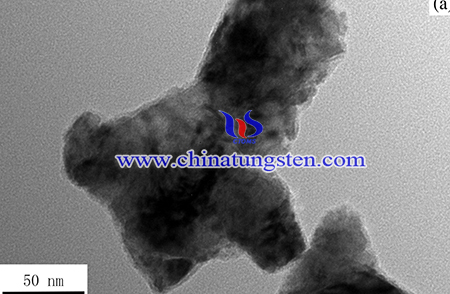Preparation of Carbon-Coated Tungsten Trioxide with Enhanced Photocatalytic Activity Using Ammonium Paratungstate
- Details
- Category: Tungsten Information
- Published on Sunday, 27 June 2021 17:32
With the rising global energy supply and related environmental issues brough by burning of fossil fuels, various materials including nitrides, oxides, metals, metal chalcogenides and phosphides have been developed. Tungsten oxides (WOx) caught a lot interest because of their earth-abundance, highly tunable composition, high chemical stability at an appropriate pH value, and excellent electrical conductivity. Individually, WOx semiconductors has excellent performance in photocatalytic degradation of many organic pollutants.
Unfortunately, it has the drawbacks of low light adsorption and relatively narrow band gap. An effective and practical strategy is to design tungsten oxide composites with carbon. improve the photocatalytic ability by preparing the amorphous carbon-coated tungsten trioxide (WO3) with a high defect concentration. In order to overcome these disadvantages, WO3 had been doped with carbon to enhance its photocatalytic activity.

The fabrication method of carbon-coated tungsten trioxide is conducted as following procedures: All raw materials were of analytical grade and commercially available and used as received without further purification. The commercial WO3 was used for comparison.
0.01 mol ammonium paratungstate (APT), 0.24 mol ammonium nitrate (NH4NO3, ⩾ 99.0%), 0.1 mol glycine (C2H5O2N) and various contents of glucose (C6H12O6) were dissolved into deionized water, and then the solution was continuously stirred for a homogeneous state. The mixture was placed on an electrical furnace in air for thermal processing. The solution was evaporated with the formation of a gelatinous mass during heating. Upon further heating, the resultant mass swelled suddenly, accompanied by the release of a lot of gases. The whole process of swelling and combustion of gel indicates the non-explosive and self-propagating exothermic reaction, which took several minutes. The samples prepared with 0.017, 0.033, 0.05 and 0.067 mol glucose were described as G1, G2, G3 and G4, respectively.

In summary, amorphous carbon-coated tungsten oxide nanocrystals were synthesized via with enhanced photocatalytic activity is prepared using ammonium paratungstate as starting material. Carbon-coated tungsten oxide existed in the form of round particles with size of ~ 150 nm and the WO3-x nanorods with the length of ~ 20 nm and diameter of 5 nm. The synthesized carbon coated WO3 showed a considerable rate for organic degradation under UV–visible light as well as good stability. This excellent performance is attributed to the synergistic effect of the amorphous carbon and the large amounts of defects. Moreover, the material demonstrated good photocatalytic stability under visible light after 5 recycling degradation of MB.
- APT Manufacturer & Supplier, Chinatungsten Online: ammonium-paratungstate.com
- Tungsten News & Prices of China Tungsten Industry Association: www.ctia.com.cn
- Molybdenum News & Price: news.molybdenum.com.cn
- Tel.: 86 592 5129696; Fax: 86 592 5129797; Email: sales@chinatungsten.com



 sales@chinatungsten.com
sales@chinatungsten.com